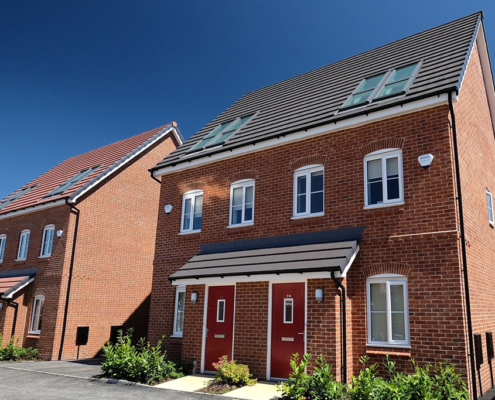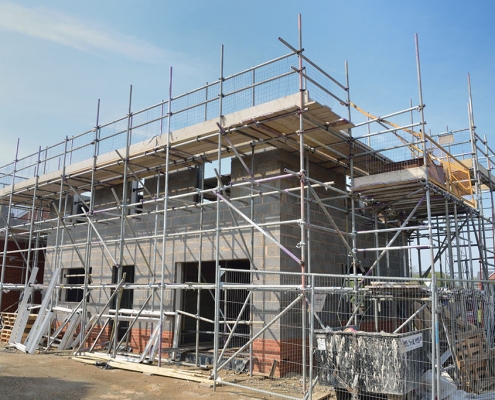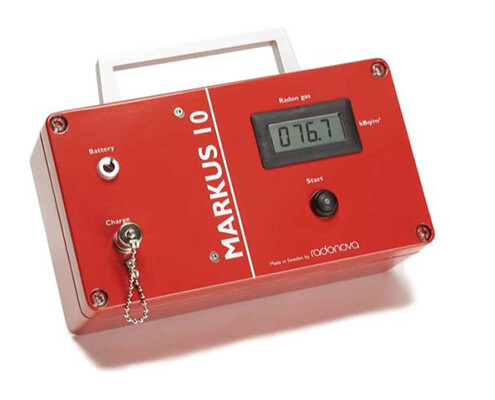Is Radon Testing a Legal Requirement?
Radon Risk Assessments and Surveys
Is Radon Testing a Legal Requirement?
In this article, we look at the responsibilities in different sectors for radon surveys, monitoring and if required radon remediation. All employers, landlords, public sector buildings, and commercial property owners have a legal requirement to ensure that their buildings are safe. But what exactly are the radon risks and who is responsible for testing?
What is Radon?
Radon is a natural radioactive gas which comes from the decay of uranium in rocks and soil. It is colourless, odourless and tasteless. Outside the level of radon in the air is low, but radon can collect in enclosed places, such as houses, workplaces and other buildings. Long-term exposure to radon increases the risk of lung cancer, particularly in smokers. Radon exposure is the second greatest cause of lung cancer, after smoking.
Buildings in certain parts of the country are more likely to have raised radon levels, this depends on the underlying geology and the building construction. Granites, migmatites, some clays and tills are particularly rich in uranium and radium, which decay into radon. Radon may enter buildings through cracks in the floor, gaps in construction, windows, drains or spaces around cables and pipes.
As radon is colourless, odourless and tasteless the only way to actually know the radon levels within a property is through radon monitoring and detection.
Is Radon Testing a Legal Requirement?
Radon Legal Compliance
Radon in the Workplace
The Management of Health and Safety at Work Regulations 1999 require the assessment of health and safety risks, this should include radon in specific circumstances. The Ionising Radiations Regulations 2017 (IRR17) comes into play where the Radon Gas is above the defined level of 300 Bq/m3.
Radon and Building Regulations
When extensions are made to existing buildings in high radon areas, or new buildings are constructed in these areas, the Building Regulations require that protective measures are taken against radon entering the building.
Landlord’s Responsibilities with Regard to Radon
Landlords have a responsibility to their tenants under Duty of Care and the Housing Act to provide a safe home.
Radon is identified as a potential hazard in dwellings in the Housing Act 2004. The need for action is defined by the Housing Health and Safety Rating System which applies a numerical score to the different hazards depending on their overall risk to the occupant. If the score exceeds certain trigger points the local housing authority (Local Authority) is obliged to act.
Is Your Property or Building Site in a Radon Risk Area?
You can use this map to help undertake a suitable and sufficient risk assessment and take appropriate action where necessary.
The updated map provides information that allows property owners, property developers, commercial developers, landlords, and employers to make informed decisions on the benefits of undertaking radon measurements and potential remediation work.
The only way to know if a building has a high radon level is to have it tested. If your workplace or business is in a radon affected area we recommend that a test is arranged. At Earth Environmental & Geotechnical we provide radon surveys, radon monitoring & testing, and if required radon remediation designs to ensure your employees are not at risk from radon in the workplace.
Our Radon Services allow you to stay compliant with The Ionising Radiations Regulations 2017 , The Ionising Radiations Regulations (Northern Ireland) 2017 legislation which requires employers to act if radon levels exceed the workplace threshold.
Radon is a serious issue throughout the UK. Whilst every building contains some level of radon the levels are usually low, so the risk to health is small. However, in some parts of the country e.g. South West England, Kent, Bristol, areas of Wales, Cumbria, and parts of the Peak District to name a few, buildings and grounds may have higher levels of radon and there may be a need for radon monitoring in specific areas.
The radon map allows local councils, national and regional governments, social and private landlords, private homeowners, and employers to assess the radon risk in their properties. It is also used in building regulations to inform where radon preventative measures should be incorporated in new buildings.
The information is from the interactive map from www.ukradon.org, and the UK Health Security Agency. Further information on radon in the workplace can be found here
What is the Radon Action level?
Public Health England recommends that radon levels should be reduced in homes where the average is more than 200 becquerels per metre cubed (200 Bq m-3). This recommendation has been endorsed by the Government. This Action Level refers to the annual average concentration in a home, so radon measurements are carried out with two detectors (in a bedroom and living room) over three months, to average out short-term fluctuations.
What is the Target Level?
The Target Level of 100 Bq m-3 is the ideal outcome for remediation works in existing buildings and protective measures in new buildings. If the result of a radon assessment is between the Target and Action Levels, action to reduce the level should be seriously considered, especially if there is a smoker or ex-smoker in the home. top











